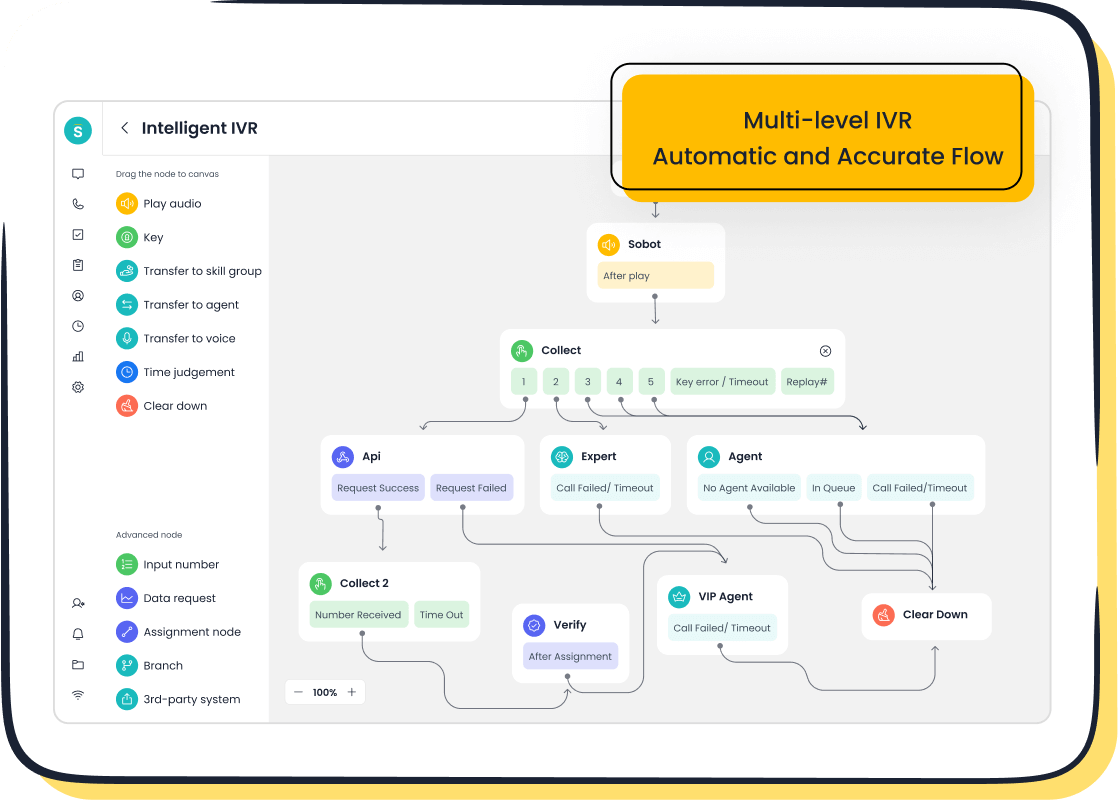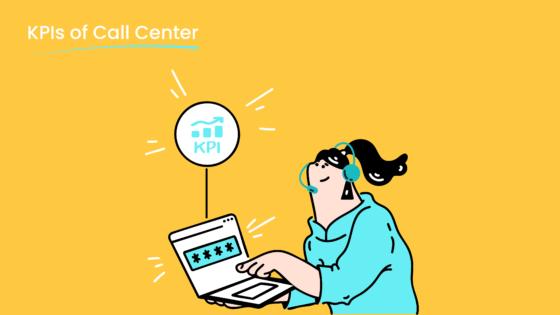Boost Your Multichannel Support With These 7 Tips

Managing customer queries across email, chat, and social media is a big challenge. You need a clear strategy to deliver excellent customer service. This article gives you seven tips to create a seamless and efficient customer experience. A strong customer service strategy directly impacts your customer. Good service builds a loyal customer base. The Sobot call center, powered by Sobot AI, helps unify your customer support. This multichannel support approach improves your service. Great service makes every customer interaction count.
| Impact on Customer Loyalty |
|---|
| 35% more customer loyalty for companies using seamless multichannel support |
This guide provides a framework to build a unified service strategy. Let Sobot help you enhance your customer service.
Tip 1: Centralize Interactions in One Platform

Your team juggles many tasks. Switching between different systems to find customer information is a major challenge. This constant context switching slows down your service and frustrates both your agents and the customer. It also makes providing personalized service nearly impossible when customer data is scattered. A unified platform is the solution. It brings all customer communication into one place. This gives your team a complete view of every customer interaction.
The Value of a Single View
A single view of the customer transforms your support service. It eliminates the need for your agents to navigate multiple disconnected systems. When your team has immediate access to a customer's full history, they can resolve issues much faster. This improves first-contact resolution and boosts agent productivity.
You can deliver a better customer experience when every agent has the full story. This consistent and informed service builds customer trust and loyalty. Every communication becomes an opportunity to strengthen the customer relationship.
This approach to multichannel support ensures no customer feels like they are starting over with each new communication. Better service begins with better information.
Choosing the Right Help Desk
Choosing the right platform is key to centralizing your communication. You need a solution that brings all your channels together. Look for a help desk with a unified inbox. This feature consolidates tickets and messages from email, social media, live chat, and voice calls. This ensures your team can manage every customer inquiry from one screen.
A great example is Sobot's Omnichannel Solution. It creates a single, AI-enhanced workspace for your team.
- It unifies all customer communication channels.
- It provides a complete view of the customer journey.
- It helps your team deliver fast, personalized service.
This type of integrated system empowers your team to provide excellent service. It makes every customer communication seamless and efficient. Your customer receives the high-quality service they expect.
Tip 2: Standardize Your Customer Service
A customer may contact you on Twitter one day and via email the next. You must ensure the quality of your customer service remains high across every channel. Standardizing your customer service creates a predictable and reliable experience. This consistency is the foundation of excellent customer service and builds lasting customer trust. Every customer deserves the same great service.
Why Consistency Matters
Consistency in customer service shows professionalism and reinforces your brand’s identity. Your customer develops expectations from their interactions. A unified communication style makes your customer feel secure. This builds an emotional connection and strengthens the customer relationship. Your customer service team becomes a reliable resource for every customer.
Inconsistent service, on the other hand, can damage your business. It creates confusion and frustration for the customer.
A uniform approach to customer service prevents these issues. It ensures every customer receives the same clear information and quality of service. This consistent communication is key to a positive customer service experience.
Create a Channel Playbook
A channel playbook is your guide to standardized customer service. It gives your team clear rules for every communication channel. This tool ensures every agent provides the same high-quality service. Your playbook should be a central resource for your customer service team. It empowers them to handle any customer inquiry with confidence.
Your playbook should include several key components to ensure a complete service guide:
- Role-specific guidelines for support agents
- Response guidelines and best practices for each channel
- Procedures for resolving common issues
- Protocols for escalating difficult customer situations
This playbook makes your customer service more efficient. It ensures every customer interaction reflects your brand's commitment to excellent service.
Tip 3: Train Your Team for Multichannel Support
Your team needs the right skills to provide excellent customer service. A great agent on the phone may not be a great agent over live chat. Each channel requires a unique approach to communication. Proper training ensures every customer receives high-quality customer service, no matter how they contact you. A well-trained team is your best asset for building customer loyalty.
Develop Channel-Specific Skills
You must develop skills specific to each support channel. A phone call needs a different touch than an email. Agents on calls use their tone of voice to show empathy. Agents using email or chat must convey that same empathy through writing. This requires strong writing skills and a deep understanding of professional tone.
When your team masters each channel, the customer has a better experience. This specialized training helps your agents resolve issues effectively. It also makes your customer service feel more personal and professional. Every customer deserves a great interaction. This focus on skills improves your overall customer service quality.
Build a Training Module
A strong training module gives your team the tools for success. It should provide clear guidance and practice for handling any customer issue. Your training program is the foundation of consistent customer service. A comprehensive module prepares your team for effective multichannel support.
Your training module should cover these essential topics:
- Introduce All Channels: Explain the unique expectations for calls, emails, and chats. A customer using chat expects a faster response than a customer sending an email.
- Teach Communication Etiquette: Train agents in polite language and active listening. For written channels, focus on clear, simple writing that shows you understand the customer's feelings.
- Establish Customer Service Basics: Cover core principles like empathy and problem-solving. Every agent should know how to make a customer feel heard and valued.
- Ensure System Familiarity: Make sure agents are comfortable with the software for each channel. This reduces delays and helps the customer get answers faster.
- Use Scenario-Based Training: Create real-life customer scenarios for role-playing. This helps agents practice their skills in a safe environment before interacting with a live customer.
Tip 4: Leverage Automation and Self-Service
Your agents spend a lot of time on simple, repetitive questions. This takes them away from complex customer issues that need a human touch. Automation and self-service tools can handle these common queries. This frees up your team and improves your overall customer service. It also gives your customers the quick answers they want, improving their experience with your service.
Empower Customers to Find Answers
Today's customers want to find answers on their own. Providing self-service options empowers your customer and meets their expectations for fast, easy support. A good self-service strategy reduces the number of tickets your customer service team receives. This allows every customer to get the help they need, when they need it. Many customers prefer this method for simple tasks.
Research shows a strong customer preference for self-service. This approach to customer service is no longer optional; it is a core part of a modern service strategy.
- 81% of all customers try to solve issues themselves first.
- 67% of customers prefer self-service over speaking to a representative.
- 77% of customers view companies more positively if they offer self-service options.
This data shows that a great self-service experience is essential for excellent customer service.
Implement Chatbots and a Knowledge Base
You can implement self-service with two powerful tools: chatbots and a knowledge base. A well-organized knowledge base gives customers a central place to find information. An AI-powered chatbot provides instant, 24/7 support for any customer. This combination delivers a superior customer service experience.

Sobot's AI-powered, multilingual Chatbot offers round-the-clock self-service. It understands customer intent and provides natural, helpful responses. This service helps customers solve problems instantly. For phone support, the Sobot Voice/Call Center uses an intelligent IVR to handle initial queries. This feature routes calls efficiently, so every customer connects with the right agent for the best service. This level of automation ensures your customers receive excellent service at every touchpoint. Your customer service team can then focus on high-value interactions.
Tip 5: Define a Purpose for Each Channel
Your customers expect different things from different channels. A customer sending an email is not the same as a customer sending a tweet. You need a clear strategy that gives each channel a specific job. This approach helps you meet customer expectations and use your resources wisely. A smart channel strategy makes your entire service operation more effective for every customer.
Map the Customer Journey
First, you must understand your customer's journey. Think about how your customers interact with your brand. Where do they go when they have a simple question? Where do they turn for a complex problem? Mapping this journey shows you which channels your customers prefer for certain tasks. Some customers may look for quick updates on social media, while another customer needs detailed instructions via email. Understanding this behavior is the first step in building an effective channel strategy. This knowledge helps you be where your customers need you most.
Assign Primary Support Functions
After you map the journey, you can assign a primary role to each channel. This strategy guides customers to the right place for the right kind of help. It also helps your team focus its efforts. For example, live chat is great for quick sales questions, but email is better for a customer who needs to explain a complex issue. This creates a better experience for every customer.
Tip: Let your customers know the best channel for their needs. You can add a note on your contact page, like "For urgent issues, please call us. For detailed questions, email works best."
This simple communication manages customer expectations and improves satisfaction. Your support team can then provide excellent service on every channel. This clear strategy helps all your customers.
| Channel | Best For |
|---|---|
| Phone | Urgent problems, complex issues |
| Detailed explanations, non-urgent support | |
| Live Chat | Quick questions, sales assistance |
| AI Chatbots | 24/7 answers to common questions |
| Social Media | Public questions, brand engagement |
Tip 6: Measure Performance With Unified Metrics

You cannot improve what you do not measure. To understand your multichannel performance, you need to track the same metrics across every channel. This gives you a clear picture of what works and where you need improvement. Unified metrics help you compare performance accurately and make smart decisions for your customer service strategy. This focus on data drives real growth in customer satisfaction.
Key KPIs to Track
You should track Key Performance Indicators (KPIs) that reflect the quality of your service. These numbers tell a story about your customer experience. Important metrics include first contact resolution (FCR), average response time, and customer satisfaction (CSAT). The CSAT score is especially vital because it directly measures customer happiness.
A good goal for customer satisfaction is a score above 80%, which indicates an excellent level of satisfaction. Here is how general CSAT scores are benchmarked:
- 80-100%: Excellent / Extremely Satisfied
- 65-80%: Good / Satisfied
- 50-65%: Average / Quite Satisfied
- 35-50%: Poor / Unsatisfied
Tracking these KPIs helps you understand each customer interaction and find opportunities for improvement. This data is essential for raising your overall customer satisfaction.
Create a Unified Dashboard
A unified dashboard brings all your KPIs into one place. This tool gives you real-time insights into your team's performance. You can see ticket volumes, agent availability, and customer satisfaction scores at a glance. This complete view helps you manage your resources and respond to issues quickly. A great dashboard allows you to filter data and set up alerts for critical changes.
For example, the financial service platform Opay used Sobot's Omnichannel Solution to unify its support channels. This change allowed them to measure performance consistently. The results were incredible. Opay saw its customer satisfaction rate jump from 60% to 90% and cut costs by 20%. This success story shows how a unified approach to measurement can transform the service you provide to every customer. A single dashboard empowers you to deliver better service and achieve higher customer satisfaction. Each customer benefits from this data-driven approach.
Tip 7: Gather and Act on Cross-Channel Feedback
Listening to your customer is the final, crucial step. You need to gather customer feedback from every channel to understand the full experience. This information shows you what you are doing right and where you need to make changes. Acting on this feedback demonstrates that you value your customer, which builds strong customer loyalty and drives continuous improvement.
The Value of Holistic Feedback
Holistic customer feedback gives you a complete view of customer satisfaction. When you collect opinions from email, chat, and social media, you can spot trends and systemic issues. Analyzing this data helps you understand the "why" behind a customer's feelings. You can identify common themes and see which problems cause the most frustration. This deep understanding allows you to prioritize fixes that will have the biggest impact. This focus on improvement makes your service better for every customer and increases overall satisfaction. True improvement comes from listening to the collective voice of your customer base.
Implement CSAT and NPS Surveys
You can easily gather feedback using Customer Satisfaction (CSAT) and Net Promoter Score (NPS) surveys. These tools measure customer satisfaction and customer loyalty directly. To get the best results, you should make it easy for each customer to respond. A simple process encourages more people to share their thoughts.
To collect effective feedback and boost your satisfaction scores, you should:
- Keep surveys short. Ask one main question with one or two follow-up questions.
- Time your requests well. Send a survey right after a support interaction is resolved.
- Use technology to help. A good platform can automate sending surveys and analyzing the results.
Closing the feedback loop is the most important part. When a customer gives you feedback, act on it. This action shows you care and leads to meaningful improvement in your service.
Effective multichannel support creates a single, unified customer experience. You can improve your support with small, focused actions.
Start by auditing your current channels. Choose one tip from this list to implement this week. A small change can make a big impact on your customer experience.
This journey toward better multichannel support does not have to be complex. Solutions like Sobot are designed to make this transition seamless, helping you deliver excellent support.
FAQ
How does multichannel support improve customer service?
Multichannel support lets you meet customers on their preferred channels. This approach creates a better customer service experience. A unified service strategy makes your support more accessible. This improves the quality of your service and builds customer trust. Your service becomes more efficient.
What is the first step to improve my support service?
You should start by centralizing your customer interactions. A unified platform gives your team a complete view of every customer. This single change can greatly improve your support service. It is the foundation for a better customer service operation.
Why is a channel playbook important for my service team?
A channel playbook standardizes your customer service. It gives your team clear guidelines for every channel. This ensures every customer receives the same high-quality service. This consistency is key to providing a reliable and professional service.
How can automation enhance my customer service?
Automation handles simple, repetitive questions. This frees up your agents to focus on complex issues. Tools like chatbots provide 24/7 service, giving customers instant answers. This improves your overall service efficiency and customer satisfaction.
See Also
A Decalogue for Deploying Comprehensive Omnichannel Contact Center Solutions Effectively
Mastering Shopify Live Chat: A Guide to Enhanced Customer Support
Elevating Customer Delight: Ten Strategies for Superior Live Chat Experiences
Selecting Optimal Social Media Customer Service Software: A Ten-Point Checklist
Your Essential Handbook for Navigating Omnichannel Call Center Software Options
